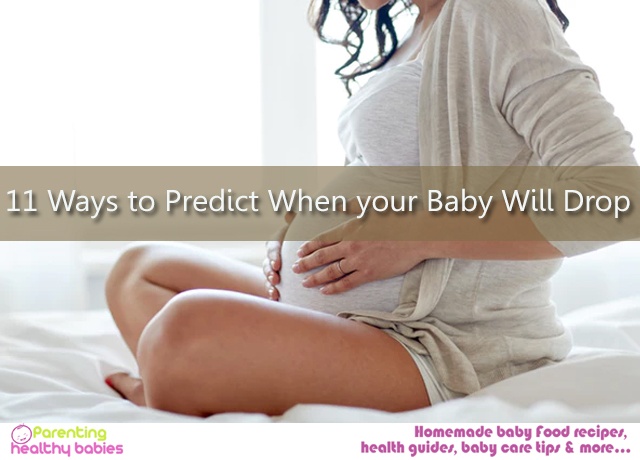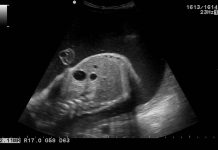Pregnancy involves different phases week by week. For most of the pregnancy period, your baby floats inside the womb, in a ‘bowl’ of amniotic fluid. As the days go by, the size of the foetus increases, until it is time for it to ‘drop’ from the abdomen to the pelvis. This happens after week 33 or week 34. That’s the time when your body is getting ready to go into labour. The baby drops in order to go closer to the ejection point by the time you go into labour. You have to keep a watch on your symptoms that might signify that the baby has dropped, because many a time women don’t really feel it inside them, during the time of dropping.
There are eleven common ways to predict when your baby might drop or has already dropped:
11 Ways to Predict When your Baby Will Drop
1. You have gone past week 34
Week 34 is generally the time during which the ‘drop’ takes place. You have to be aware of the time, as it approaches. On reaching the 33rd week of your pregnancy, you can start anticipating that the baby will drop sometime soon. And, that will surely be a great relief!
2. You feel more pressure in your pelvic area
As the foetus drops from the abdominal area to your pelvis, you feel a heavier load being carried in the area around your lower torso. If, after week 33, you start to feel a pressure that’s moving from your abdominal area to the pelvis, know for sure that your baby is preparing to drop. At this point you might also start to feel discomfort in walking. However, don’t worry, there’s only a little bit more to go!
3. Reduced shortness of breath
When the baby grows in size inside your uterus, you gradually start facing difficulty in breathing and experiencing shortness of breath. This is because the foetus crowds the area inside your abdomen and pushes itself up to the bottom of your lungs, as it grows. When the baby drops down to the pelvis, the abdominal area becomes clear and hence allows your lungs to inhale and exhale freely. Whenever you feel that you are gradually beginning to breathe better after your 33rd or 34th week of pregnancy, it might be a sign of the foetus dropping to the pelvic area.
4. Increase in vaginal discharge
The foetus dropping to the pelvis is a major sign that you are not far from labour and delivery. Hence there is an increase in your vaginal secretion. Moreover, when the vaginal secretion is like thin mucus and is more watery, it is a signifier that the baby has dropped to the pelvis, and that the labour is due in only a few more days.
5. More frequent trips to the washroom
If you feel the urge to visit the washroom more than you did a couple of weeks earlier, it means that your baby is preparing to drop or has already dropped. This happens so because the foetus starts putting more pressure on your bladder, which is located in the pelvic region.
6. Sudden pelvic pain
A sudden drop might result in an abrupt pain in the pelvis. Around week 34, if you feel an acute pain in your pelvic region, know that the baby has most likely dropped.
7. Reduced heartburn
Pregnancy causes heartburn because of the pressure that the foetus puts on your tummy and digestive tract; apart from the hormonal rush. Every food seems to be indigestible! But, when the baby drops to the pelvis, you are less likely to experience regular heartburn as the pressure on your digestive tract is reduced. Hence, a gradual reduction in heartburn is one of the major ways to predict that the baby will soon drop to the pelvis, or that it has already dropped!
8. You can gradually eat more
As you now experience reduced heartburn, it becomes easier for you to consume food on a regular basis. When you see that there’s a better feeling in terms of food and breathing overall, be sure of the fact that your baby has already dropped to the pelvis and is ready to be held in your arms!
9. Abdominal cramps
One sure prediction of the fact that your baby will fall soon, is that you experience acute abdominal cramps. Right before the baby drops, your abdominal muscles give way for the process to take place. This results in cramps and pain for a few hours or even a few days. This is, however, not to be confused with labour contractions.
10. Tingling crotch
A lightening feeling on your crotch is common after the baby has dropped to your pelvic area. This happens due to the high sensibility of the nerves during that point of time, and due to the fact that the pelvis area is a concentration of the reproductive nerves. If it is past week 34 and you’re still wondering when the foetus will drop, check whether you get the tingles down there.
11. You begin to experience labour pains
By now, you might have gone through an intensive course on differentiating between normal abdominal cramps and labour pains. For some pregnant women, the dropping of the foetus comes along with the actual labour cramps. If you notice mild labour cramps, it means that your baby is about to drop to the pelvis and that your delivery is due very soon. Along with that, if you notice a continuous liquid secretion during the same time, it means that your sac has also burst, and you will go into labour within the next few hours. It is time get admitted to the clinic!
Keeping the major symptoms in mind will help you understand your body’s functions even better. Many a time, the pelvic pain that comes along with the ‘drop’ is mistaken for a ruptured sac and labour pains. However, the drop might be accompanied by labour pains at times, but you should be able to distinguish between the two categories of pain. That way, it will be easier for you to know when to alert the doctor. Both you and your partner should follow the signs to make the journey of pregnancy and new parenthood as great and painless as possible!













